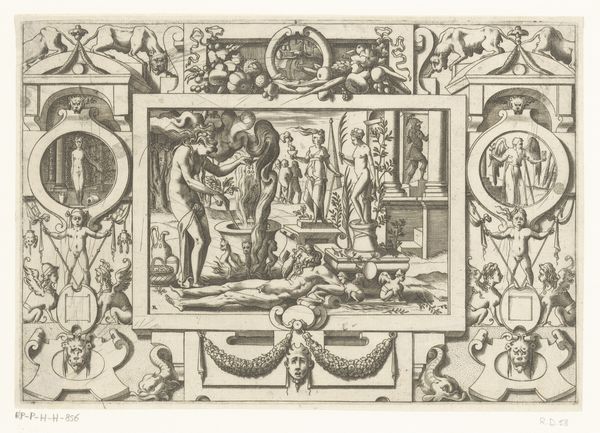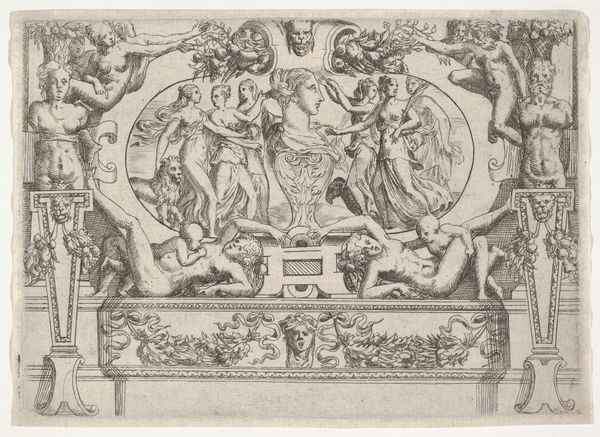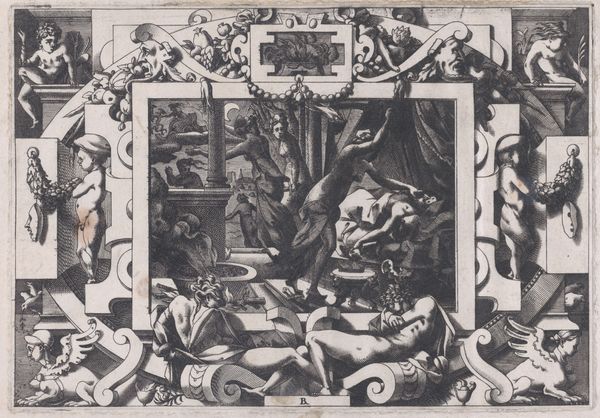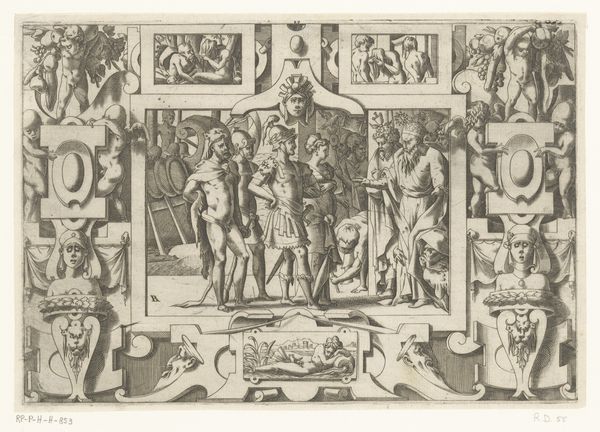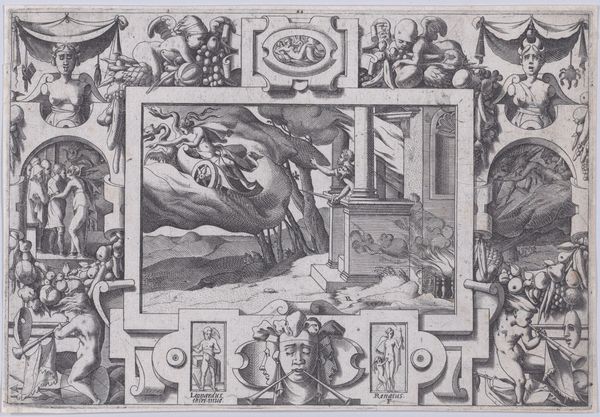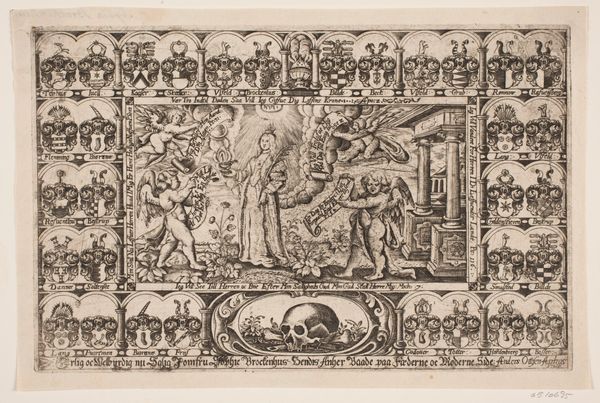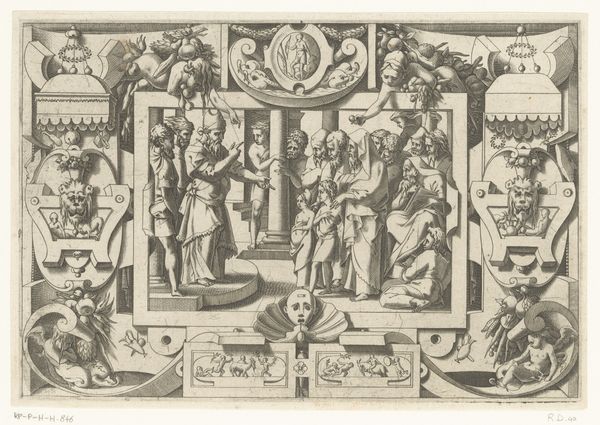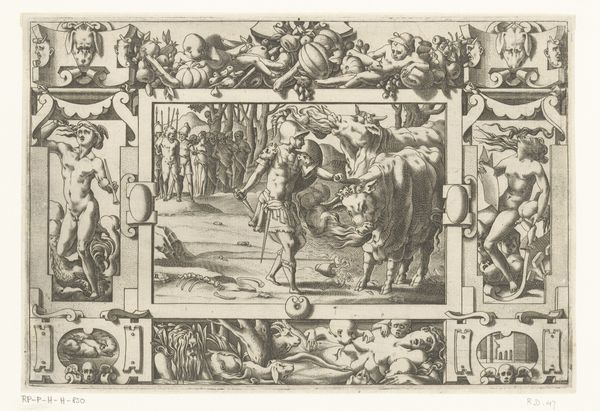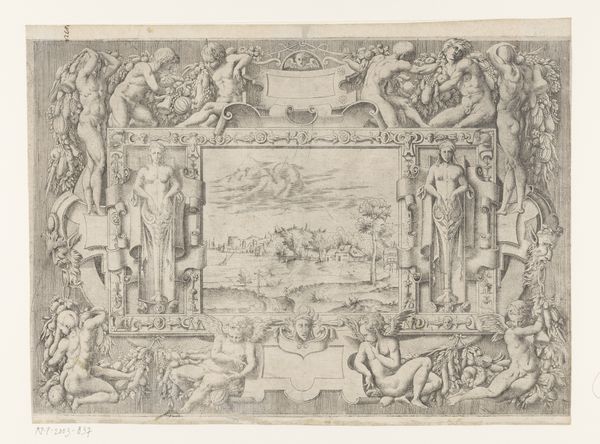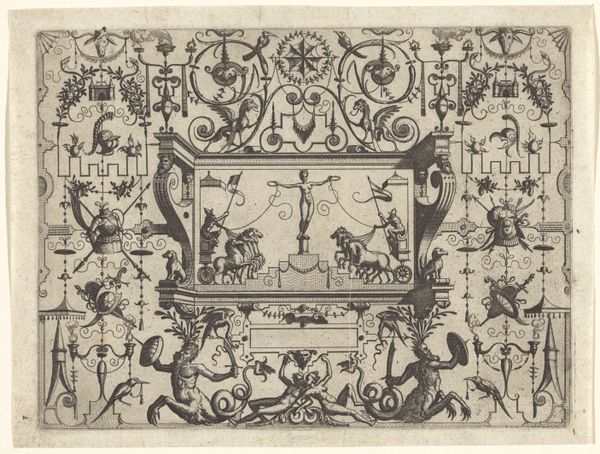
Medea offert een ram voor het altaar van Hecate en Hebe in het bijzijn van Proserpina en Pluto 1563
0:00
0:00
reneboyvin
Rijksmuseum
print, ink, engraving
#
allegory
#
pen drawing
# print
#
pen illustration
#
pen sketch
#
figuration
#
ink line art
#
11_renaissance
#
ink
#
ink drawing experimentation
#
pen-ink sketch
#
pen work
#
history-painting
#
northern-renaissance
#
engraving
Dimensions: height 159 mm, width 232 mm
Copyright: Rijks Museum: Open Domain
René Boyvin made this print, "Medea offers a ram for the altar of Hecate and Hebe in the presence of Proserpina and Pluto," in France in the 16th century. The image is an engraving based on classical mythology. It is full of cultural references and historical associations. Boyvin was a printmaker for the French royal court. This print testifies to the Renaissance revival of classical learning and the period's fascination with mythology. The story of Medea, a powerful sorceress, resonated in a time when women’s roles and power were being negotiated. The print uses visual codes to elevate the classical past and legitimize the present ruling class. Analyzing the historical context of artistic production reveals the print as more than a mere illustration. Researching courtly life, Renaissance art theory, and the status of women at the time gives us a deeper understanding of the print. Art, such as this, is contingent on social and institutional contexts.
Comments
No comments
Be the first to comment and join the conversation on the ultimate creative platform.
